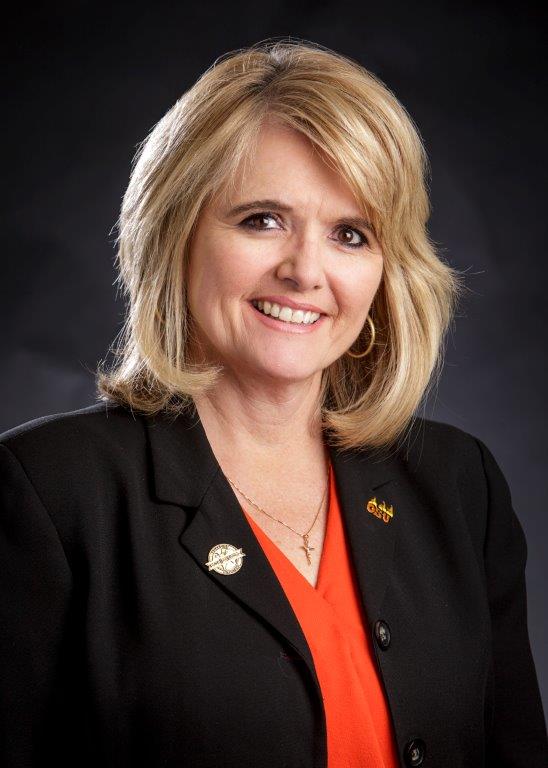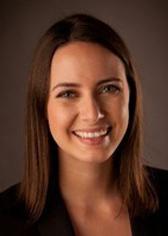BCSP Collegiate
eNewsletter
|
Welcome to the BCSP Collegiate
eNewsletter!
Whether you are an SH&E professor, student, or recent graduate, the Collegiate
eNewsletter will include news and information that will help you in your professional safety career.
See the
In This Issue section to the right to navigate to the stories of most interest to you.
Thank you to all who contributed to this issue.
|
|
 |
Safety and Leadership with a Servant's Heart
Leslie Stockel, MS, CSP, SMS;
Clinical Assistant Professor;
Oklahoma State University;
Fire Protection & Safety Engineering Technology
 Don't you love that fall "Back to School" feeling? Whether it's parents sending an excited young child off to kindergarten, or a tearful goodbye as a teenage son moves into his dorm room. The air is filled with the brisk aura of changing weather and hope and optimism. For students, parents, and yes... even us teachers.
Don't you love that fall "Back to School" feeling? Whether it's parents sending an excited young child off to kindergarten, or a tearful goodbye as a teenage son moves into his dorm room. The air is filled with the brisk aura of changing weather and hope and optimism. For students, parents, and yes... even us teachers.
The beginning of a new academic year signifies a time for each of us to re-dedicate ourselves to learning, accomplishing goals, becoming better than we were before--traveling further in our life's journey to become our best self.
Many times, when talking with students or prospective students about our industry and the career opportunities for a safety, health, and environmental (SH&E) professional, we tend to focus on the benefits that our academic programs and career opportunities can bring to the person. We talk about the availability of jobs and the lucrative salaries, the reliability of benefits, or the possibilities of forward advancement and promotion.
I'd like to focus in a different area by thinking about how an Occupational Safety and Health Professional has the opportunity through this career choice to be of service to others.
As Ralph Waldo Emerson penned, "The purpose of life is not to be happy. It is to be useful, to be honorable, to be compassionate, to have it make some difference that you have lived and lived well."
Our profession is a true service profession. As we work to protect the people, property, and environment in the organizations we work for, we do so ideally with a servant's heart. We use our skills, knowledge, and abilities to reduce hazards and risk. The product of our efforts directly affects the safety and well-being of not only those exposed, but their loved ones. As we lead others, either directly as supervisors and managers, or indirectly as partners and coaches, we should consider servant leadership as a worthy model for influencing those we interact with.
While servant leadership is a timeless concept, the phrase "servant leadership" was coined by Robert K. Greenleaf in "The Servant as Leader", an essay that he first published in 1970. In that essay, Greenleaf said: "The servant-leader is servant first... It begins with the natural feeling that one wants to serve, to serve first. That person is sharply different from one who is leader first, perhaps because of the need to assuage an unusual power drive or to acquire material possessions... The difference manifests itself in the care taken by the servant-first to make sure that other people's highest priority needs are being served. The best test, and difficult to administer, is: Do those served grow as persons? Do they, while being served, become healthier, wiser, freer, more autonomous, more likely themselves to become servants?"
I would encourage each of you to consider your participation in university functions, internships, and professional organizations as opportunities to serve others. Are you a member of your local student section of the American Society of Safety Professionals (ASSP) and American Industrial Hygiene Association (AIHA)? Have you volunteered to serve as an organization's officer or committee member? Have you participated in service projects or events?
We often begin the school year with optimism, and quickly become stressed by the rigor and demands of classes, assignments, projects, and grades. It's very easy to lose that hopeful spirit in the face of the pressures of college, but let me give you a piece of helpful advice: Serving others is a great stress reliever. Working to serve triggers oxytocin and endorphins in the body, physically altering your mood and making you feel happier and more relaxed. As the sage Buddha wrote, "Set your heart on doing good. Do it over and over again, and you will be filled with joy."
This year, Dream Big, Work Hard, and Help Others.
|
|
 |
Building a Safer World With Young Workers
 As with many incoming college freshman, Stephanie Claus had a plan for what she wanted to major in during her college career. Claus began her first year at Slippery Rock University of Pennsylvania (SRU) studying English Education. However, after shadowing an English teacher, she quickly realized that becoming an English teacher wasn't the path for her. She began researching other majors offered at SRU when she came across Safety Management.
"I learned that it was something my uncle studied," said Claus. "He told me a little bit about the safety industry and encouraged me to meet with someone in the department."
Claus scheduled a meeting with SRU's Safety Management Chairperson, Dr. Joseph Cali, who introduced her to the major, industry, and career paths. Right after their meeting, Claus changed her major to Safety Management and began her journey to safety education and certification.
Claus graduated in 2016 with a Bachelor of Science in Safety Management and soon thereafter obtained her
Graduate Safety Practitioner (GSP) designation. She currently works for Rutgers University as a Health & Safety Specialist. She attributes her success in finding a job with her procurement of the GSP.
"Having the GSP has been a huge help during past job searches," said Claus. "Employers I've interviewed and worked with have commented on the designation's importance...there were even employers only recruiting students that would have their GSP upon graduation."
While in school, Claus co-founded and currently serves as President of the National Young Worker Safety Coalition (NYWSC), designed specifically to focus on young worker safety. The roots of NYWSC began while on an invite-only trip to Singapore for the XXI World Congress on Safety and Health at Work 2017 conference with classmate Bryan Deal. Out of 125 youth champions that were selected to go, Claus and Deal were the only two Americans selected. It was there that they met current NYWSC Vice President Lester Clarvall-a child labor program administrator for the Oklahoma Department of Labor-and began discussing the need for increased focus on youth safety.
"We did not know of an organization in the U.S. that specifically focused on young worker safety," said Claus. "Because of this, we developed NYWSC to eliminate young worker injuries and illnesses through education and outreach."
More information on the National Young Worker Safety Coalition can be found at their website
.
On top of starting the NYWSC, Claus was also involved in the American Society of Safety Professionals (ASSP) and the International Labour Organization (ILO). The ILO selected her to contribute to the SafeYouth@Work Action Plan held in Geneva, Switzerland. There she met with worker organizations, employers, and other young professionals to develop an action plan to help reduce young worker injuries and illnesses.
"This was one of my favorite professional experiences because I was able to learn more about the safety struggles employers, employees, and students face in countries outside of North America."
When asked what she would recommend to future SH&E students, Claus stressed the importance of networking and getting involved. "Networking does not have to be something daunting or scary," said Claus. There are a number of SH&E related organizations and conferences SH&E students can join or attend. Claus recommends that, if you have a job, speak to your company's safety manager or safety department or, if you are a student, take the time to stay a few minutes after class and talk to a professor.
"Through networking you can gain mentors, references, and develop professional relationships that can help you get hired."
There are also several societies and groups SH&E students can join. ASSP, of which Claus was the president of her student chapter, is a great society to join to meet future and current safety professionals.
When asked what she would tell a young person thinking about safety as a career, Claus exclaimed that there are no limits to what you can do in the safety field. She has had the opportunity to travel the world and start her own coalition. She is constantly learning and experiencing new things; whether it be test flying drones, prepping fireworks and laser light shows for Rutgers football games, or containing a gas leak or mercury spill, the safety field keeps her on her toes and it serves as a great way to help others accomplish their goals in a safe and healthy way.
|
|
 |
BCSP Ambassadors Hit the Road
Former BCSP Board President Carl Heinlein, CSP, OHST, ARM, hit the road on behalf of BCSP in February of this year to present at Slippery Rock University's ASSP student chapter meeting.
Heinlein was the sole presenter to over 150 participants at the meeting where they discussed BCSP credentials-primarily the Graduate Safety Practioner (GSP) designation-Qualified Academic Programs (QAPs), and the benefits BCSP certifications offer for military personnel.
"It's important to actively engage the future of the safety, health, and environmental profession," said Heinlein. "By acknowledging their hard work and dedication, and informing them of the benefits of certification, we can actively re-enforce their drive and will to make this world a safer place."
Heinlein also took a trip to the West Virginia University ASSP student chapter in March.
He was asked to present the value of the GSP, scholarships, and how to identify valuable credentials in safety, health, and environment practice.
"It was another strong student interaction experience," said Heinlein. "We met for over two and a half hours and had strong, interactive discourse regarding the value of BCSP certifications."
In May, Chris Patton visited Indiana University of Pennsylvania to present to 25 safety program students. Patton discussed the process for becoming certified as well as how to become involved as a volunteer.
If you would like to schedule a BCSP ambassador visit or spread the word about a career fair or other student safety events,
share your event with us.
Photo: Carl Heinlein and SRU ASSP students
|
|
 |
Scholarship Application Submissions
BCSP awarded $
155,000 to QAPs accredited by the Accreditation Board for Engineering and Technology (ABET) or Aviation Accreditation Board International (AABI) in 2017, funding 31, $5,000 student scholarships. Application
s for 2018 scholarships are available now!

In order to qualify and apply for a BCSP scholarship you must be a junior, senior, or master's student and have a minimum 3.0 cumulative GPA. You must also submit to your program chair a one page essay detailing why you entered the safety program and what you want to accomplish in the profession in addition to
a signed scholarship application form by October 15.
The program chair selects the award recipient and will submit the completed application form, photo, essay, and release form to BCSP.
BCSP also supports scholarships from the American Industrial Hygiene Foundation (AIHF), American Society of Safety Professionals Foundation (ASSP Foundation), and the Association of General Contractors (AGC) of America.
The
AIHF Foundation awards scholarships via funds donated from AIHA members, individuals, corporations, and local sections. There is a comprehensive list of the scholarships AIHF offers on the Foundation's website.
The
AGC Education and Research Foundation provides undergraduate and graduate scholarships to 100 or more deserving students. Since 1970, they have awarded over 4,000 scholarships totaling over $10 million.
|
|
 |
Introduce Students to an Exciting and Rewarding Career in Safety
This time of year can be stressful for students entering their final year of high school. A lot of work and tough decision-making loom near. BCSP wants to help ease those concerns with our Academic Database.
The Academic Database is an online tool designed to help future and current college students find academic programs in the safety, health, environmental (SH
&E) fields. It lists every SH
&E program available in colleges across the U.S. The database includes options to narrow search results by Field/Major, Degree Type, and by State, making it easier for students to find a program that best fits their needs whether they be geographical or purely academic.
According to our
2018 SH&E Industry Salary Survey, a career in safety offers financially secure positions with above-average annual median incomes of $97,000. Those with at least one of our eight certifications earned an average of $20,000 more per year than those without a BCSP certification.
Please watch and share the video below to see why a career in safety might be the right choice!
|
|
 |
Connect with the BCSP Foundation
The BCSP Foundation believes in investing to create and grow a safer global community. The most vulnerable members of the workforce are those from ages 16-24. In 2015 over 427 workplace related deaths occurred in that age group. Employees aged 16-19 faced non-fatal injury rates of 110.5 per 10,000 full-time employees (FTE) while ages 20-24 saw 98.3 per 10,000 FTE.
We encourage you to get involved as we launch the BCSP Foundation by going to the website and following our social media using the links below.
|
|
|
|
Send Us Your News
Consider the BCSP Collegiate
eNewsletter
your eNewsletter.
|
|
Share Events With Us
Have an upcoming job fair, conference, or chapter meeting that you would like to share with readers? Would you like to invite a BCSP representative to attend an event? We would like to hear about it!
|
|
Newsletters and Annual Reports Archive
BCSP keeps an archive of all of its eNewsletters and Annual Reports. You can view these and other publications in the About BCSP webpage's resources column.
|
|
BCSP Academic Database
BCSP maintains the Academic Database for those seeking the knowledge required to become an SH&E professional, looking to earn recertification points, or looking to stay knowledgeable of the latest developments in safety practice.
|
|
|
Promote the Value of Your School
If your academic program is a Qualified Academic Program, BCSP would like to work with you in making sure individuals seeking quality SH&E education know your school produces future leaders.
Contact Lisa Spencer, BCSP Marketing and Outreach Director, for more information.
|
|
 |
 |
BCSP's Toolkit for Advancing the Safety Profession
Banner displays are a great way to promote BCSP certifications and earn recertification credit. A display is available to any certificate holder for use at chapter meetings, regional or local conferences, career fairs, and other safety-related seminars, meetings, and presentations. BCSP ships to and from any U.S. venue and provides literature at no cost.
If you would like to reserve a display, please fill out the Display and Literature Request Form. Displays are first come, first served and must be returned.
Presentations on safety certification can also be done for recertification points, and BCSP has many resources that can be used for presentations, including pre-made PowerPoints, on our Presentations and Outreach webpage.
|
|
 |
The BCSP Career Center connects job seekers with prospective employers in the safety, health and environmental industry. Results are just a click away!
The Career Center allows job seekers who hold any of our credentials to post a resume in our resume bank for free.
For companies looking to hire individuals who hold our credentials, this is your direct route to qualified individuals.
|
|
|
 |
|